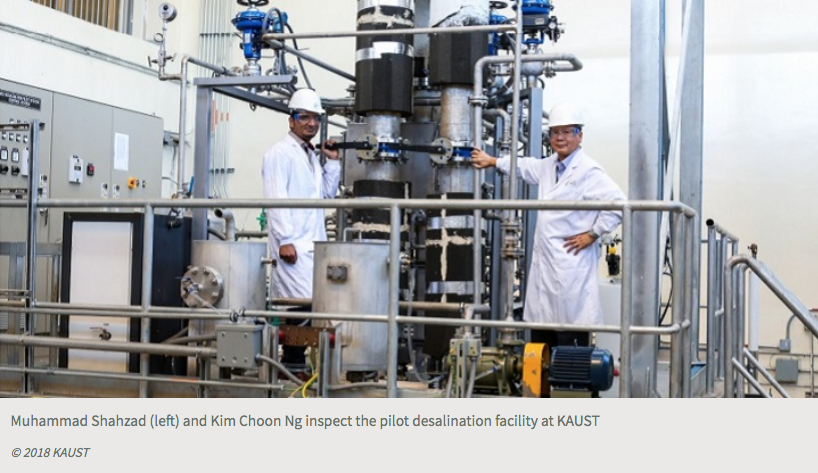

Accounting for the quality of energy needed to run a desalination plant shows benefits of using waste heat.
A novel way to assess the efficiency of rival desalination technologies could help to guide new developments to deliver potable water supplies in urban areas, shows research undertaken at KAUST.
Global water demand reached roughly 4000 billion cubic meters in 2000 and is projected to grow by more than 58 percent by 2030. Freshwater sources cannot keep up with this demand, and seawater desalination is becoming an increasingly important way to supply drinking water.
About 60 percent of the world’s desalination capacity relies on reverse osmosis systems, which use electrical power to push water through a membrane to remove salt and other impurities. Other desalination processes use heat to evaporate pure water away from saltwater. The world’s desalination capacity is expected to double over the coming decade, and simplistic calculations suggest that reverse osmosis could be a more energy-efficient way to meet that need.
But Muhammad Wakil Shahzad, Muhammad Burhan and Kim Choon Ng of KAUST’s Water Desalination and Reuse Center point out that the current ways of comparing energy efficiency in the various methods of seawater desalination consider only the amount of secondary energy consumption but ignores the type or grade of energy (for example, steam or electricity) consumed in the process.
They have demonstrated a simple thermodynamic approach that accounts for the quantity and the quality of the energy needed to run a desalination plant. This approach produces a common platform for comparison of energy efficiency uses a standard universal performance ratio that offers a fairer comparison between seawater desalination methods.
For example, combined cycle gas turbines (CCGTs) are among the most efficient electricity-generating power stations today, burning natural gas to turn a turbine that generates the electricity. But they also recover exhaust heat from the gas turbines and use it to create steam at high pressure and high temperature, which can turn separate steam turbines that contribute to the plant’s electricity output.
Heat-based desalination plants can operate in tandem with CCGTs, bleeding off relatively low temperature steam that would otherwise go to waste and using it to purify water by evaporation. The researchers calculated that exploiting waste heat from a CCGT in this way ensures the most efficient option of thermal desalination occurs in successive stages. This use of waste heat is called multi-effect distillation.
However, even this option still only achieves up to 13 percent of the maximum theoretical efficiency. “All practical desalination methods have energy efficiencies far below the thermodynamic limit,” says Shahzad. In order to achieve sustainable development goals, the efficiency of desalination should double in the coming decade, the researchers say. “There must be a shift in the technology paradigm from what is available today,” he continues.
Ng suggests that membranes based on atom-thin sheets of carbon called graphene, or hybrid systems that combine several thermally driven processes, could help to achieve a paradigm shift. Thermally driven methods require a hybrid of several thermally driven processes; for example, a combination of multi-effect distillation hybridized with an adsorption cycle that increases low-grade heat input use. They believe that up to 30 percent of the thermodynamic limit is an achievable goal for sustainable seawater desalination in the near future.




